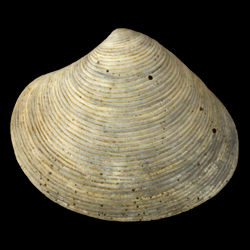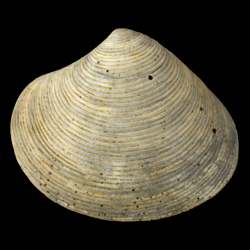
Astartidae

- Phylum: Mollusca
- Class: Bivalvia
- Order: Carditida
- Family: Astartidae
Overview
Common name: Astarte clams
Key morphological features: Small to medium-sized, equivalve or inequivalve (left valve larger) clams with shells that are oval to triangular or quadrangular in outline. Valves are compressed, usually with exterior ornamentation consisting of closely spaced concentric commarginal ribs, and are composed of aragonite. Valve interiors have a simple, uninterrupted pallial line and interior shell margins can be either smooth or denticulate depending on the species. Species of Astartidae are mostly isomyarian. The heterodont hinge has two or three cardinal teeth per valve and either laminar or no lateral teeth. Source: Mikkelsen, P.M., and Bieler, R. 2008. Seashells of Southern Florida: Bivalves. Princeton, New Jersey: Princeton University Press. 503 pp.
Geological range: Devonian to Recent (Mikkelsen & Bieler, 2008).
Geographic distribution: A distributional map for modern Astartidae may be accessed from OBIS. A distributional map for ancient Astartidae may be accessed from the Paleobiology Database.
Diversity: There are 41 recognized living species of Astartidae and 5 genera (WoRMS database, unvetted). The Paleobiology Database recognizes 39 fossil genera and 561 fossil species (unvetted).
Paleoecology: The Astartidae are mobile, marine, filter-feeding bivalves that live shallowly buried in sandy or gravelly sediments. They feed on relatively coarse particles in the water, including diatoms. Source: Mikkelsen & Bieler (2008).
Phylogenetic status: Paraphyletic. The recent molecular phylogenetic analysis by González and Giribet (2015) supports the paraphyly of Family Astartidae.
